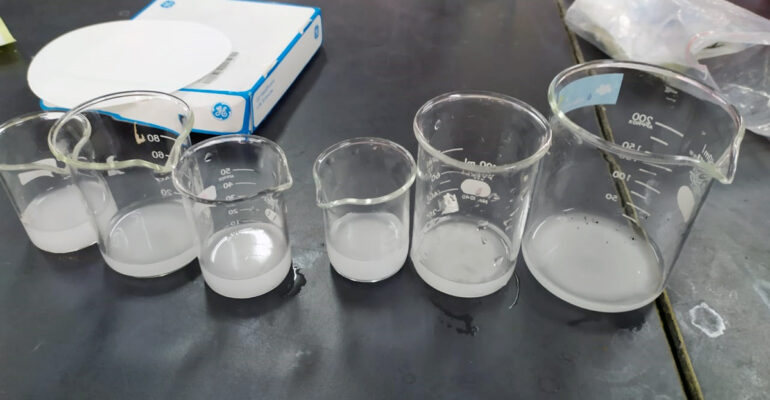IPB University Students Detect Food Glucose Level, Anticipation for Diabetics

Currently, diabetes mellitus is one of the biggest health problems in Indonesia. Based on the data from the Ministry of Health, until 2014 alone, the proportion of diabetes mellitus in Indonesia has reached 6.9 percent. Diabetes mellitus is a chronic metabolic disorder caused by the pancreas not producing enough insulin or the body cannot use insulin produced effectively. As the result result, there is an increase in the concentration of glucose in the blood.
The body of people who suffer diabetes mellitus cannot excrete enough insulin. This makes them have to avoid consuming food with high glucose content. Unfortunately, for the diabetics, this could be a pretty hard challenge since the information regarding glucose level in food they consume is not clearly known.
This problem is the background for the three IPB University students to conduct research on the mechanism of food glucose detection in order to participate in the Student Creativity Program (PKM). The students were Julius Sumitra, Dinda Rana Athaya and Sharfina Listyawati from the Department of Food Science and Technology (ITP), Faculty of Agricultural Technology (Fateta).
"As far as we are concerned, the detection carried out for diabetics is the detection of blood glucose levels. There is no media for direct detection of food glucose. Meanwhile, various kinds of non-industrial food sold in restaurants, food stalls or kiosks, do not provide information on the content of glucose levels in their food, "said Julius.
For diabetics, consumption of glucose levels must be considered. Many foods are small in size, but have high glucose levels. Clear information about glucose levels in each food that will be consumed, will help diabetics to control their food intake.
"Therefore, we tried to examine the mechanism for detecting food glucose through enzymatic reactions and rosella bio-indicators. We tested the corn starch with various concentrations. With the mechanism we made, the results showed that glucose could be detected using the rosella paper. This is seen from the discoloration on the roselle paper," said Julius.
Until today, the three of team still focuses on the laboratory testing so the detection mechanism can be perfected. However, Julius and team are determined to do further research.
“Our dream is that in the future, this research can be continued until the test kit creation so it can be used fast and practical by the diabetics,” emphasized Julius.



